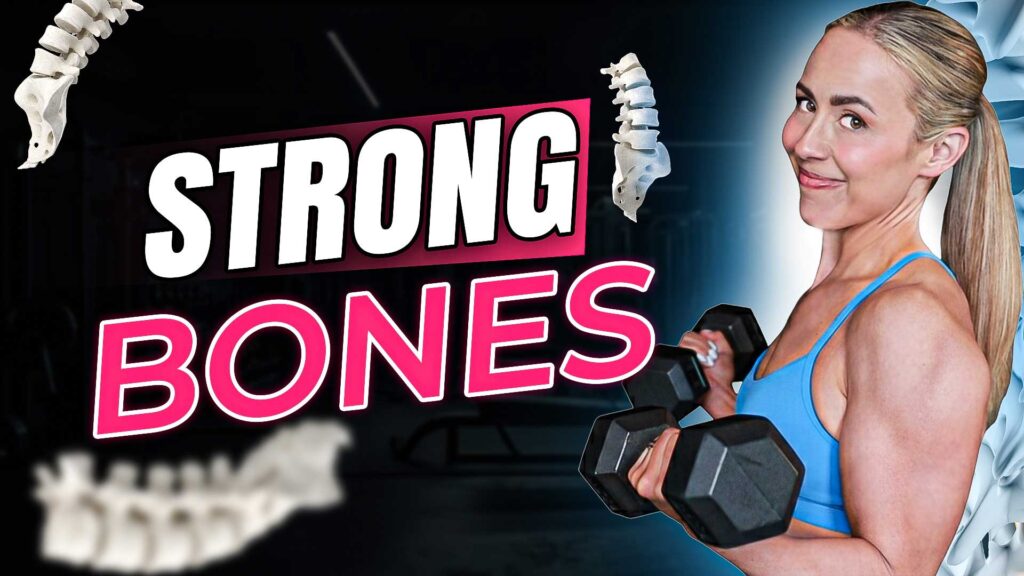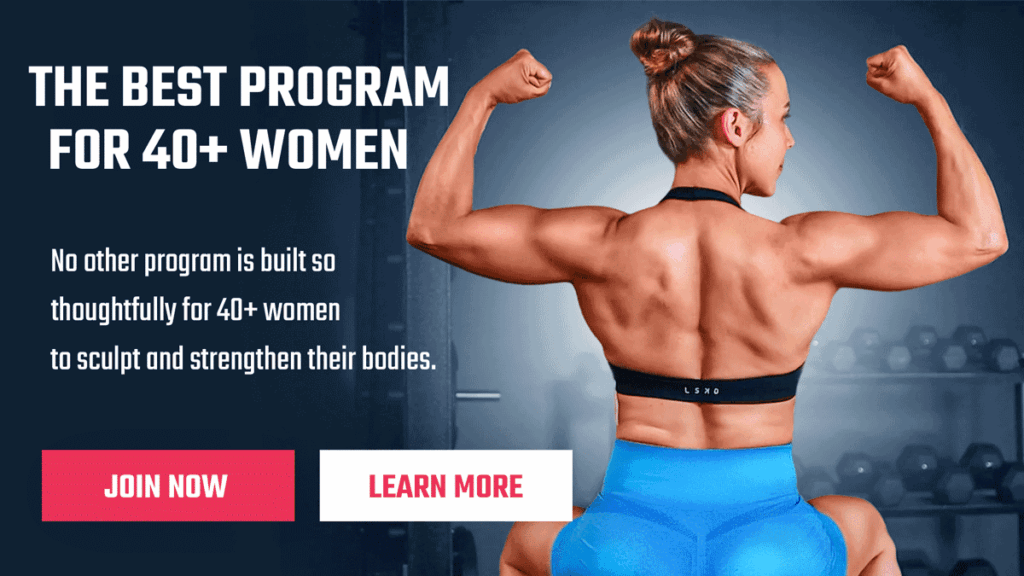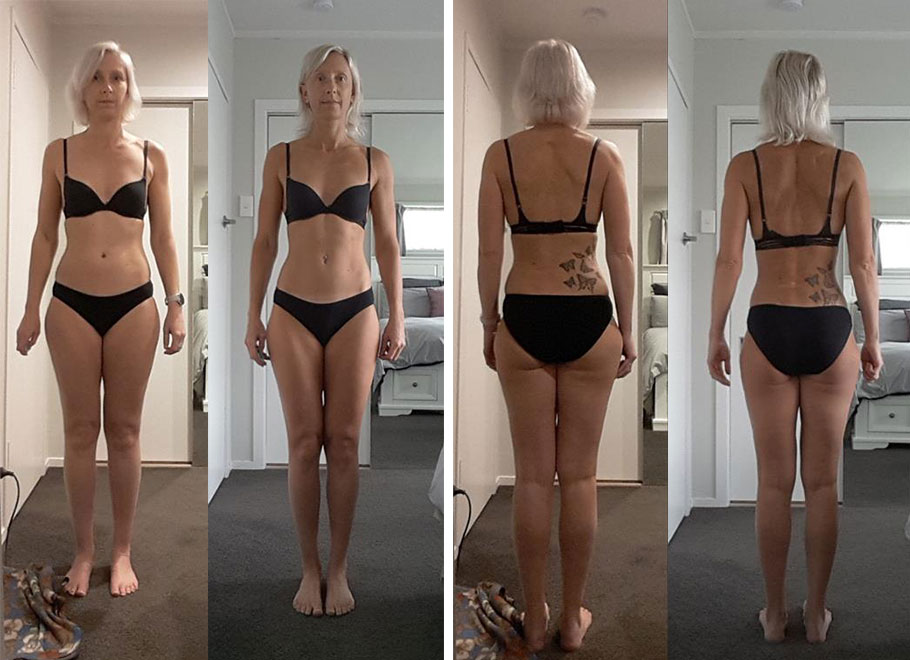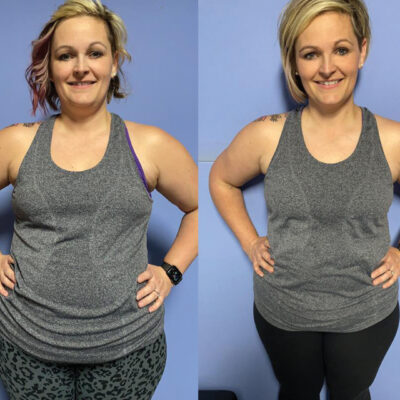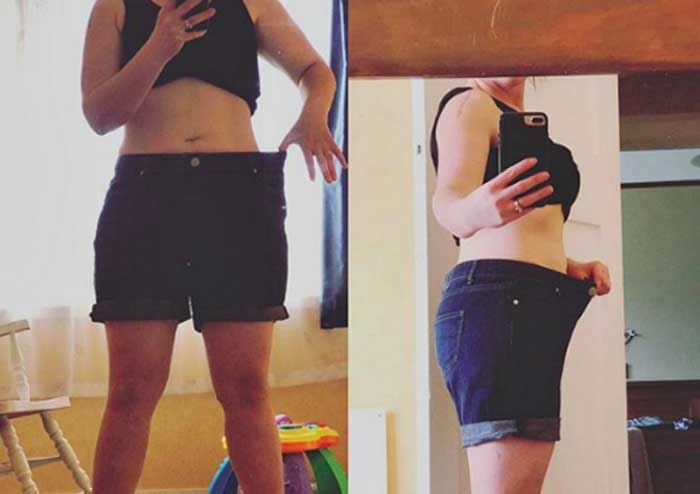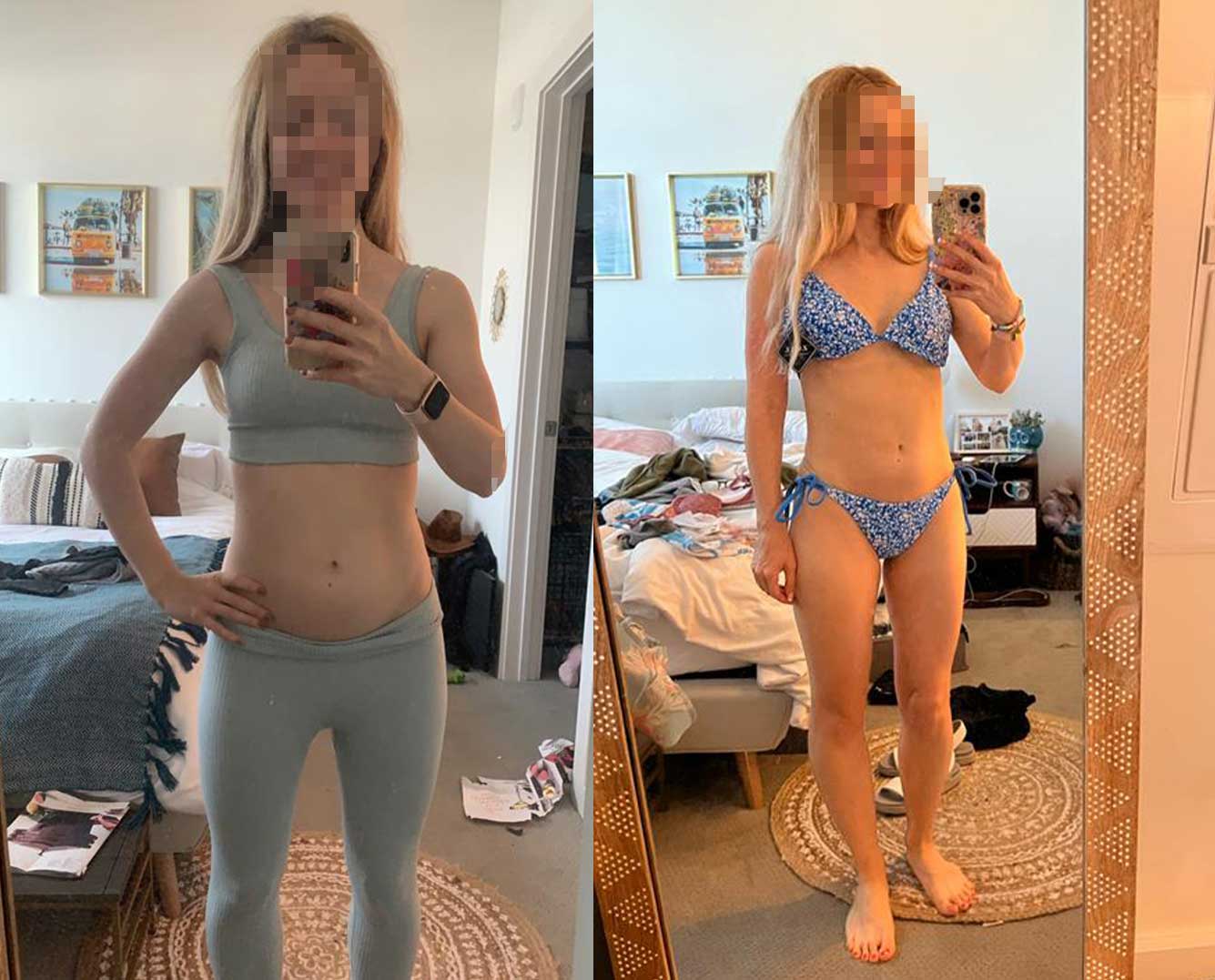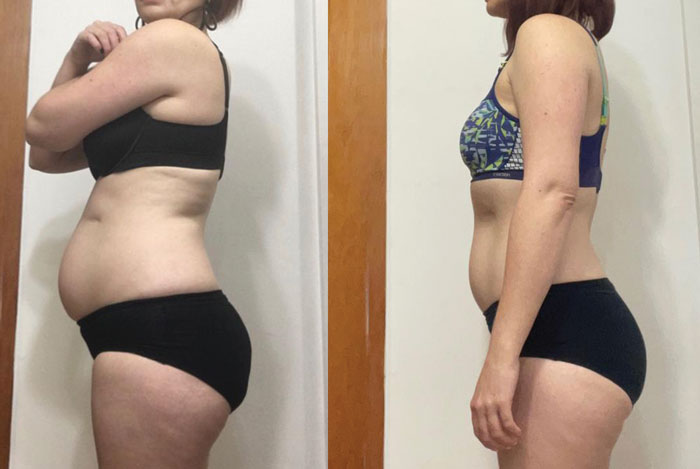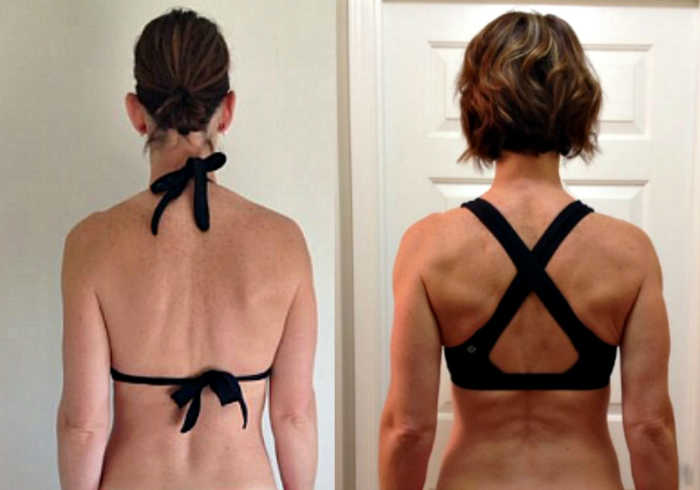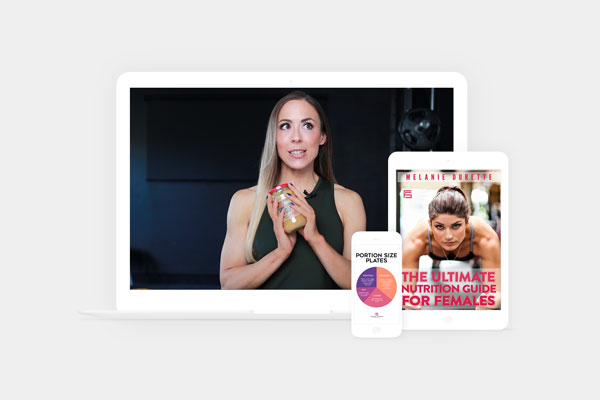How I Reversed Bone Loss and Ostepenia Naturally
If you are wondering how to reverse bone loss or how to reverse osteopenia – I know how scary and overwhelming it feels. In this article, I share my personal journey of reversing bone loss, along with practical tips and encouragement to help you build stronger, healthier bones.
In my early 20s, I found out that I had osteopenia. The doctor told me my bones looked like those of an 80-year-old woman and to stop doing the activities I loved because I was at high risk of fractures. Even housework, he said, could be dangerous.
It was devastating.
As you’ll learn, I reversed my osteopenia in less than two years. Fast forward to my late 40s, I just had a DEXA scan, and the results showed normal bone density – which is reassuring given my history.
In this post, I’ll walk you through exactly what worked for me to rebuild and maintain strong bones: nutrition, training, supplements, mindset, and more.
And because I know how frightening it feels to hear you have low bone density, I’ll also share the single best piece of advice I ever received. I believe it’s the reason I was able to reverse osteopenia and become the strong, healthy person I am today. I think it will help you too.
If you prefer to watch, rather than read:
Can You Really Reverse Osteopenia?
When you search online, you’ll often hear that bone loss can only be slowed, not reversed. I was told the same thing by multiple specialists.
But less than two years after my diagnosis, my next bone scan came back normal. I’ll never forget my doctor looking at the results and saying:
“This isn’t medically possible.”
But it was possible. I had done it – by changing how I ate, trained, and thought about my health. I don’t know your situation – but I do know that there’s hope.
The Backstory: Why I Lost Bone Density So Young
At 19, I lost my period. At the time, despite seeing eight different doctors, no one had an explanation. I had to figure it out myself. Turns out I was overtraining, underfueling, and putting myself under huge stress in university.
I later learned I had something called Female Athlete Triad (now known as Relative Energy Deficiency in Sport). Basically: too much activity + too little nutrition = hormonal disruption and bone density problems.
That experience taught me that it’s not just about calcium intake and being active, which is what we normally think about when it comes to bone health. What you eat, how much you eat, and how you train matters for bones. It also taught me that you have to take your health into your own hands so if you have low bone density, I want to share what helped me in the hopes that it will help you too.
How to Reverse Bone Loss: What Worked for Me
1. Prioritize Protein for Bone and Muscle
Most people think of calcium when they think of bones, but protein is just as important. Not only is protein a key structural component of bone but it’s also essential to build and preserve muscle mass, which then affects your bone. Stronger muscles put more force on your bones which helps with bone density.
In my 20s, I was active but not eating nearly enough protein. So the first thing I had to do was learn to fuel better, especially around my workouts. I discovered protein powder for the first time in my life but also learned to balance my meals better. Once I fixed that, I gained a significant amount of muscle and actually started to look a lot healthier too.
It’s important to remember that protein needs increase as you get older so if you are over 40, you may need even more protein – and this is definitely something you should consider a priority for better bone density. Also, having more muscle and being stronger is going to help prevent falls when you are older, which is extremely important if you have lower bone density.
2. Eat Enough Calories To Support Bone Health
If you’ve spent years on very low-calorie diets and undereating, it’s important to know that this can weaken your bones long term by lowering the hormones and nutrients that keep them strong. Undereating means not enough protein, calcium, vitamin D, or energy to support bone repair. It also lowers hormones that protect bone density. It can also reduce muscle mass or your ability to build muscle, and we need muscle to put stress on bones to keep them healthy.
So for me personally, even though I wasn’t super skinny, I knew I needed to gain some weight to help rebalance my hormones in my 20s. I increased my calories significantly and gained over 10lbs. I was still a healthy weight and, in fact, looked a lot better because I had gained some muscle mass.
For this reason, I’ve always prioritised building muscle and strength over being super slim, even if that means I’m not as lean as I’d like to be. This has been really key for me – especially as I get older – because I want to be sure my hormones, muscle mass and bone density are optimal.
Remember, in midlife, undereating could make bones more fragile at a time when natural bone loss is already accelerating.
3. Strength Training To Improve Bone Density
Weight training is one of the most important things you’ll do for your bones. Bones respond to mechanical stress and in the case of weight training, this is from muscles pulling on the bones when you exercise. This force signals the bones to remodel and strengthen.
You don’t need to be doing powerlifting, explosive style training to build your bones, so even if you are a beginner, weight training will be beneficial. The most important thing is that you follow a safe program that targets the right sites. For example, weighted squats and lunges benefit the hips and spine, while upper-body pressing and pulling benefit arms and wrists. If you are more advanced, exercises like deadlifts, good mornings and bent over rows are good ways to target the spine.
At the time of writing this article, there’s a lot of info on social media about jumping for bones. Many women shouldn’t be jumping, and that’s ok. While I include some light jumping drills and skipping in my own regime – it’s honestly not very much. For me, lifting is the foundation. Weight lifting not only benefits the bones but it also builds balance and muscle, which help prevent falls.
4. Supplements and Sunshine For Strong Bones
In my 20s, I was an avid milk drinker so I was probably getting enough calcium but I became pretty pedantic about calcium supplements when I found out I had low bone density. Over the years, I took less calcium because we started hearing that it was potentially harmful and, at that time, I didn’t understand the nuances of vitamin D and K to balance out calcium.
These days I mainly take vitamin D and K2, magnesium and a small amount of calcium for bones because I know my diet falls short. I also take a multivitamin to fill in the gaps.
On the topic of Vitamin D, after receiving my diagnosis, I decided to travel to Australia for a year. I spent 4 months working on a sailboat and then the rest of the year on sunny beaches. I let a lot of things slide that year in terms of nutrition and supplements – but I felt so incredibly healthy compared to Canada where we just don’t have that kind of warmth and sunshine. When I returned home and had my final bone scan, I couldn’t help but wonder if the sunshine was one of the main reasons I was able to have such a dramatic reversal of bone loss.
These days I make an effort to get 10 to 15 minutes of sun where I expose my skin, like my legs or my back, whenever I can. Since I live in New Zealand now, it’s easier to do than when I lived in Canada – but I still need to supplement vitamin D, especially in the winter.
The next two things I’m going to discuss are more controversial but they were things I did so I want to touch on them.
5. Soy and Bone Health
When I was diagnosed with osteopenia, we didn’t have the internet. The only resource I could find that said bone loss was reversible was a library book written by an institute that was reversing bone loss using isoflavones. I can’t remember what kind of institute it was – but I actually phoned them and remember them telling me they were getting results working with post-menopausal women but it could hurt trying in my case.
So I started using more soy – specifically soy protein and milk. These days I still use soy milk daily and eat tofu 3 to 4 times per week. Not necessarily for bone health, but because I like them.
Why soy? Soy contains isoflavones – plant compounds that act like very weak estrogens (phytoestrogens). Since estrogen decline accelerates bone loss in midlife women, researchers have studied whether soy can help and found that they may have a small but positive effect on bone mineral density in postmenopausal women.
Bottom line: the concerns about soy have been hugely overblown on social media. There are some potential benefits of soy that are backed by research including for cholesterol, heart health, bone density, and sometimes menopause symptoms.
6. Visualize Yourself Getting Stronger
Whether you believe in visualisation or not, it at least puts you in a positive frame of mind and lowers stress levels around any health condition, which in the long run is going to be beneficial. When I was trying to reverse low bone density, I started using visualisation – focusing on my spine and hips getting stronger.
After getting told I had osteopenia and should cease any activities that put me at risk, I spent about six weeks scared and grieving. Not doing much because I was scared of fracture.
Then someone did an intervention – and one thing he told me changed my life – he said – you are already so healthy – this is an opportunity to get even stronger.
I remember getting off the porch steps after our talk in a completely different mindset. I was ready to take this on and despite what the doctors were saying, I was going to figure it out. Everything I did, everything we talked about today, was because of my own research – because I decided this was not going to be my destiny.
Prior to my diagnosis I was working extremely hard in law school and in fact, was the top student. But getting osteopenia so young made me realise we can’t take anything for granted. So I decided to travel and pursue my dreams. Which ultimately led to about 15 years of travel and creating Female Fitness Systems.
If you have low bone density, this is your opportunity – or possibly your wake up call – to change your life too. No matter how old you are, there’s so much you can do.
It’s time to become your strongest self.
If you want some help with your training and nutrition be sure to check out these pages to learn more:
Learn more about training programs here.
Learn more about my most popular program which combines training and nutrition here.
FAQs on How to Reverse Bone Loss
Can you rebuild bone after 50?
Yes, while bone density naturally declines with age, research shows strength training, proper nutrition, and adequate protein can improve bone density even after 50.
How long does it take to reverse osteopenia?
It varies, but many people see improvements on a DEXA scan within 1–2 years of consistent nutrition, training, and lifestyle changes.
Is it possible to reverse bone loss without medication?
Yes, in some cases. Nutrition, strength training, and maintaining healthy hormone levels can all support bone rebuilding. Always work with your doctor if you’ve been prescribed medication.
What foods help reverse bone loss?
Protein-rich foods, calcium sources (like dairy, tofu, leafy greens), vitamin D foods (like fatty fish), and soy products with isoflavones all support stronger bones.
Does jumping help reverse bone loss?
Jumping can help improve bone density, especially at the hips, because the impact stimulates bone remodeling. However, research shows it’s less effective for the spine, and it’s not always safe for everyone (for example, if you have joint issues or pelvic floor concerns).
Strength training is the most reliable way to reverse bone loss because it targets multiple areas (hips, spine, arms, wrists) and also builds muscle to protect against falls. If your body can tolerate it, combining both weight training and some impact exercise (like jumping, skipping, or agility drills) may give the best results.

